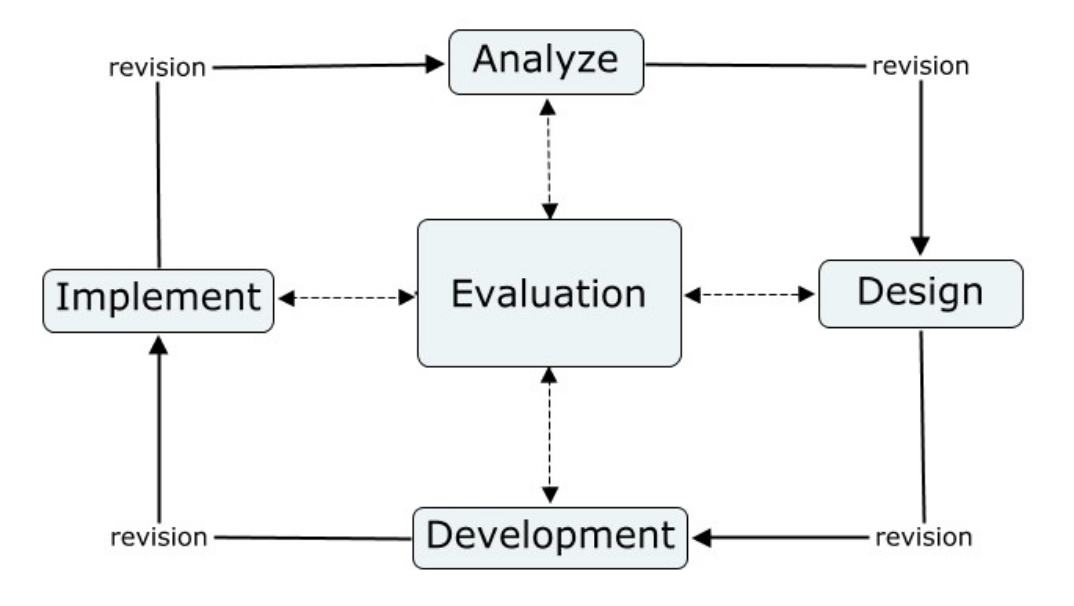
Abstract explains Instructional Design Models
Instructional design models serve as invaluable tools that empower educators to create engaging, learner-centric, and effective learning experiences. Their importance lies in providing a structured framework that optimizes the learning journey, leading to enhanced comprehension, retention, and application of knowledge.
Instructional design models vary in their approach and effectiveness based on the specific context, learning objectives, and audience needs.
Understanding instructional design models is crucial as they provide structured frameworks for creating effective learning experiences. These models serve as roadmaps and their effectiveness often depends on various factors, such as the learning context, the subject matter, the audience's characteristics, and the available resources. Educators and instructional designers might choose to combine elements from different models or adapt them to suit their specific needs and preferences.
What are the most effective instructional design models?
Here are several widely recognized instructional design models, each with its strengths:
- ADDIE (Analysis, Design, Development, Implementation, Evaluation): ADDIE is a traditional, systematic model that emphasizes a sequential approach to course development. Its phases include analyzing needs, designing content, developing materials, implementing, and evaluating the effectiveness of the course.

By Fav203 - Own work, CC BY-SA 3.0, - SAM (Successive Approximation Model): SAM is iterative and agile, focusing on collaboration and rapid prototyping. It involves repeated cycles of preparation, iteration, and testing, allowing for flexibility and frequent learner feedback.
- Dick and Carey Model: This model emphasizes systematic instructional design through a series of nine steps, including identifying instructional goals, conducting instructional analysis, and designing assessment instruments.

By Kenbethea - Own work, CC BY-SA 3.0, - Bloom's Taxonomy: While not a traditional instructional design model, Bloom's Taxonomy provides a framework for creating educational objectives. It classifies learning into cognitive domains, guiding educators in designing learning experiences that address different levels of thinking (e.g., remembering, understanding, applying, analyzing, evaluating, creating).

By Corydave - Own work, CC0, - Merrill's First Principles of Instruction: This model focuses on five principles: problem-centered learning, activation of prior experience, demonstration of skills, application of skills, and integration of these skills into real-world activities.
- TPACK (Technological Pedagogical Content Knowledge): TPACK integrates technological knowledge, pedagogical knowledge, and content knowledge, emphasizing the importance of educators' ability to effectively integrate technology into teaching practices.
- Rapid Prototyping: While not a specific model, rapid prototyping involves creating quick drafts or prototypes of instructional materials. It allows for quick iteration and refinement based on feedback before finalizing the content.
What’s the Instructional design model we use in Abstract Technology?
Ultimately, the most effective instructional design model is the one that aligns closely with the learning objectives, engages the learners effectively, and allows for continuous improvement based on assessment and feedback.
In our projects, we often apply the Conversational Framework, developed by the UCL Knowledge Lab, a model designed to understand and analyze different aspects of interaction within educational contexts. It focuses on the dynamics of conversation and collaboration in learning environments, emphasizing how dialogues between learners and educators contribute to knowledge construction and understanding.
This framework comprises four key dimensions that are integral to conversations in educational settings:
Initiation: This dimension involves how conversations or interactions are initiated. It explores the starting points of discussions, questions, or prompts that spark engagement and encourage participation. Initiations can come from both educators and learners and can be in various forms, such as questions, statements, or activities designed to provoke thought.
- Response: Once an interaction is initiated, the response dimension considers how participants respond to the stimuli. It delves into the nature and quality of the responses, whether they are brief, elaborate, argumentative, exploratory, or evaluative. Responses play a crucial role in driving the conversation forward and shaping the learning process.
Feedback: Feedback is an essential element in conversations that facilitates understanding and reflection. This dimension examines how participants provide feedback to each other, whether it's corrective, supportive, evaluative, or elaborative. Constructive feedback helps in refining ideas, correcting misconceptions, and enhancing learning outcomes.
Elaboration: Elaboration focuses on the depth and expansion of conversation. It involves building upon initial ideas, extending discussions, and fostering deeper understanding through elaborative discourse. Elaboration can involve providing examples, exploring concepts in-depth, or connecting ideas to real-world contexts.
By understanding and harnessing the dynamics within these dimensions, educators can create more engaging and effective learning environments that foster critical thinking, knowledge construction, and meaningful dialogue among participants.
We ensure your organization achieves educational excellence and drive innovation in the ever-changing digital learning landscape. Look no further than Abstract Technology for expert educational technology consulting services that will transform the future of your organisation!
